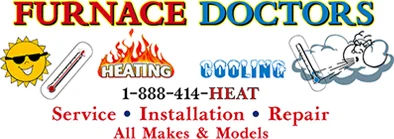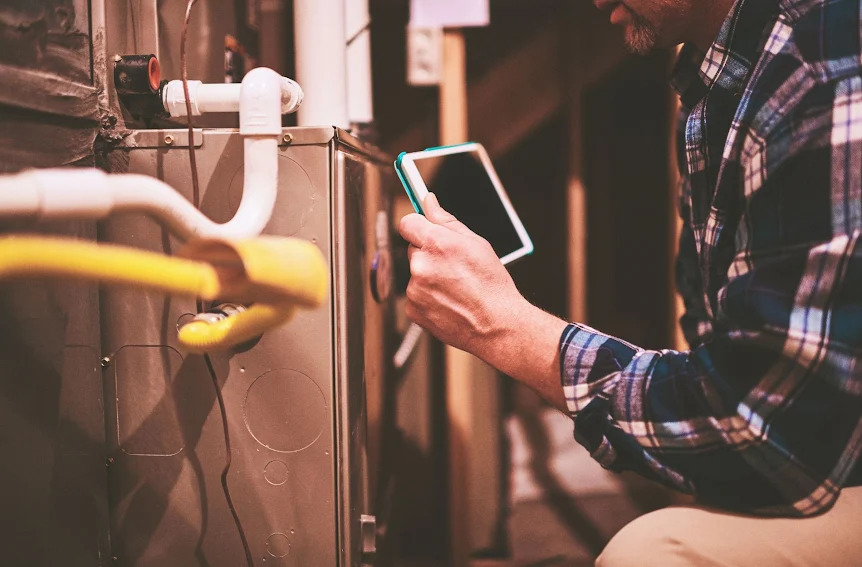If your furnace is hidden away in a utility closet or garage in your Bellevue home, it is easy to forget about it until something goes wrong. One of the most dangerous problems that can come from furnace failure is not visible or obvious: a carbon monoxide leak. This invisible, scentless gas can pose serious health risks if it is not caught early. That is why being able to recognize the potential signs of a leak is so important for every homeowner.
Furnace maintenance is not just about staying warm during colder months. It is also about keeping your family safe. Carbon monoxide leaks can happen quietly, without noticeable warning signs. But the sooner you can pick up on the problem, the quicker it can be fixed before it puts your home’s safety at risk. Here is how to tell if your furnace might be leaking carbon monoxide and what you should look out for within your living space.
Common Symptoms of Carbon Monoxide Leaks
Carbon monoxide can be difficult to detect without a proper sensor, but your body and environment can still give you some warning signs. If someone in your household starts feeling sick or lightheaded when the furnace is running, it is worth investigating right away. Watch closely for the following symptoms:
– Headaches that start when entering the home and go away when leaving
– Dizziness or blurred vision
– Shortness of breath or a feeling of tightness in the chest
– Unexplained nausea, even when no one else is sick
– Suddenly becoming very tired or drowsy, especially for no clear reason
These symptoms can often feel like the flu, which is why they are sometimes dismissed. One way Bellevue homeowners can catch on is if multiple people in the same space start experiencing these effects at once, particularly when they are near the furnace or in rooms that are typically served by the system.
It is not just physical symptoms you should watch for. Your surroundings may hint at a furnace issue too. There are also environmental signs to be aware of, such as:
– Yellow pilot light flame instead of the usual blue
– Brown or black soot around the furnace or nearby vents
– Excess moisture on windows or walls
– Dead indoor plants near heat vents
If you notice one or more of these signs combined with any physical symptoms, do not assume it is a coincidence. Delaying action can turn a warning sign into a serious emergency.
How to Detect Carbon Monoxide Leaks in Your Furnace
Even if your furnace seems to be working like it should, hidden leaks can still happen. Detection is key. Carbon monoxide detectors should be installed on every level of your home, especially near sleeping areas and close to where the furnace is located. Test these devices monthly and replace batteries regularly. If your detector alerts you to a problem, do not try to solve it yourself. Leave the area and bring in trained professionals to inspect your system safely.
Aside from detectors, there are a few things you can check visually:
1. Look at the pilot light. If it is burning yellow instead of bright blue, the fuel might not be burning completely.
2. Check the flue pipe or venting for rust or gaps, which can let gas escape into the home.
3. Notice any strange smells. While carbon monoxide itself cannot be smelled, a blocked or cracked heat exchanger might give off a burning smell or signs of stale air.
Still, the most reliable way to catch trouble early is to schedule regular maintenance. Our technicians are trained to spot potential risks before they lead to serious damage. If your home in Bellevue has not had a furnace inspection in over a year, it may be time to have one done to make sure your system is in safe working order.
Preventative Measures for Carbon Monoxide Safety
One of the easiest ways to avoid carbon monoxide leaks in your Bellevue home is through prevention. Regular furnace maintenance can catch small problems before they become dangerous. Our technicians check for signs of wear, corrosion in the heat exchanger, venting obstructions, and improper gas combustion. These are all factors that can cause or lead to carbon monoxide leaks if left unaddressed.
A poorly installed or aging furnace can also be a source of risk. Our professionals make sure all parts of your heating system, especially flue pipes and vents, are correctly installed and clear of blockages. Blocked venting is a common reason gas may back up into your home instead of being pushed outside where it belongs.
If your system is older, especially one that is well past the manufacturer’s expected lifespan, it may lack modern safety features. Replacing it with a newer, sealed combustion unit can provide added peace of mind. These units pull air in from outside the house, burn fuel, and send each byproduct directly outdoors with minimal risk of exposure inside the home.
To keep carbon monoxide levels in check, here is what Bellevue homeowners can do:
– Schedule annual furnace inspections before the heating season starts
– Replace carbon monoxide detector batteries twice a year
– Keep flammable or combustible materials away from the furnace area
– Watch for condensation on windows near the furnace, which could be a sign of a blocked exhaust
– Ask our technicians about system upgrades during any routine tune-up
Committing to these routines helps reduce risk and keeps your system operating efficiently. That means better comfort and peace of mind during the colder months.
When to Call for Professional Help
You should reach out to our professionals right away if you suspect your furnace may be releasing carbon monoxide. Any signs of physical symptoms—headaches, fatigue, nausea—or visible issues around the unit should not be ignored. A carbon monoxide detector going off is a clear signal that it is time to get everyone out and call someone who can diagnose the problem correctly.
When our technicians inspect a potential carbon monoxide issue, they perform a detailed check of your furnace. This includes testing for leaks, checking the heat exchanger, looking for cracks or corrosion, and inspecting the venting system. They also measure the carbon monoxide levels within and around the furnace. This process identifies not only whether there is a leak, but also where it is coming from and what caused it.
Sometimes the solution is simple, like resealing a loose connection or clearing a blocked pipe. In other cases, more significant repairs or a replacement might be needed to restore safety and reliability. Either way, getting help early limits the risk to your household and helps avoid higher repair costs caused by long-term damage.
Ensuring Your Home’s Safety with Furnace Doctors
Carbon monoxide leaks from furnaces are serious but preventable. The safest homes in Bellevue are the ones where furnaces are inspected yearly, carbon monoxide detectors are in place and regularly tested, and warning signs are never ignored. By learning the symptoms and keeping an eye out for potential issues, you are already ahead of the problem.
Furnaces that go unchecked can expose your home to high levels of invisible danger. But regular maintenance and timely service from our trained professionals can help keep your heat working properly without putting your safety at risk. For those heating their homes during Bellevue’s cooler seasons, reliable operation starts with knowing your furnace is safe and functioning correctly. Do not wait for small signs to become major problems. Early attention is the best way to protect your home and family.
For reliable protection against carbon monoxide risks and to ensure your furnace operates safely throughout the colder months, it’s important to address any potential issues promptly. Our professionals recommend scheduling regular inspections and repairs to keep your heating system running efficiently, and if you notice any problems, consider furnace repair in Bellevueas a priority. For a quick estimate or to book a service visit, please contact us today.



